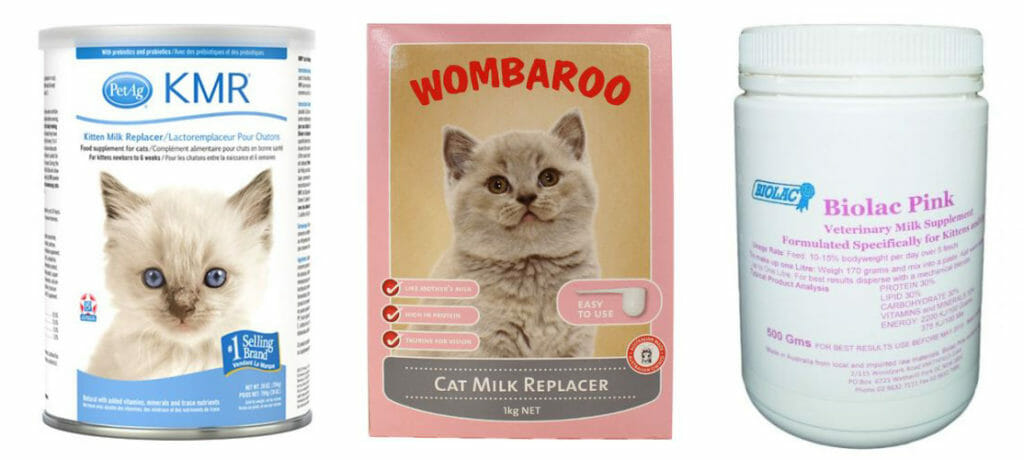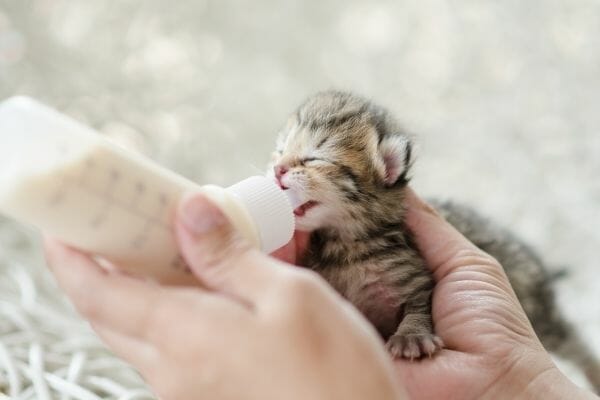When you’ve decided to adopt or foster a kitten, you’ll be faced with countless challenges such as learning how to groom a cat (you might even need to give her a shower once in a while!), teaching her how to use her litter box, and stopping her from scratching your favourite furniture. Bottle feeding a kitten is also one of the tasks a new owner or foster might need to learn. With this comes the task of making kitten glop!
What is kitten glop?
Kitten glop is simply cat milk substitute or kitten supplement formula. This is created to feed kittens who have been orphaned or those who refuse to nurse. When there is no lactating mama cat in sight, a kitten won’t be able to eat by herself. She might die unless she is bottle fed or syringe fed by humans.
Aside from young kittens, other cats can also benefit from drinking kitten glop. These include cats who are convalescing, nursing mother cats who need additional sources of nutrition, or senior cats who have a hard time eating solids.
Is kitten glop the same as cow’s milk?
No, it is not. Kittens and cats cannot consume cow’s milk because it contains lactose, which they cannot process properly. Feeding them milk from cows (or other animals) may lead to diarrhea and intestinal cramping. Though almond milk may be consumed by kittens and cats in limited amounts, it should only be served to them occasionally.
In Australia, you can purchase cat milk substitute powder in pet shops, online stores, and veterinarian clinics. We recommend PetAG KMR – Kitten Milk Replacer, Wombaroo Cat Milk Replacer, and Biolac Pink Kitten Milk Supplement.

How do I make kitten glop?
If you don’t have access to store-bought cat milk supplement, you can make your own kitten glop. However, note that homemade kitten replacement formula should not be used for more than 24 hours. Common kitty glop ingredients include milk, egg, and yogurt, but you can find recipes online depending on what you have at hand. You’ll also need these tools to whip up your own kitten glop:
- A mixing bowl
- A saucepan
- A hand mixer
- A small nursing bottle or feeding syringe
Try making any of these three milk replacement recipes:
Formula 1
Ingredients:
- 1 large egg
- 1 cup whole milk
- 2 teaspoons powdered protein
- 1 teaspoon nutritional yeast
- 110 mg powdered calcium
- 1-day dose of vitamins (formulated for adult cats)
Method:
- Beat the egg.
- Mix in the other ingredients until well combined.
- Place the formula in a small nursing bottle and serve warm.
Formula 2
Ingredients:
- 1 quart whole goat’s milk
- Unflavoured gelatin
- 1 pack: Newborn to 1-week-old kitten
- 1½ to 2 packs: 2-week-old kitten
- 2½ to 3 packs: 3-week-old kitten
- 4 packs: 4-week-old kitten
- 1 teaspoon light corn syrup
- 1 tablespoon nonfat plain yogurt (preferably made with goat’s milk)
- 1 egg yolk
Method:
- Transfer goat’s milk to a saucepan.
- Add the corresponding amount of gelatin based on your kitten’s age.
- Heat the mixture until the gelatin is dissolved completely.
- Remove the mixture from the heat.
- Mix in the remaining ingredients and serve warm.
Formula 3
Ingredients:
- 1 large egg
- 1 can evaporated milk
- 1 teaspoon nutritional yeast
- 2 teaspoon powdered protein
Method:
- Beat the egg.
- Mix in the remaining ingredients.
- Put the formula in a small nursing bottle.

Other feeding reminders
Newborn kittens usually feed every two hours throughout the day. As they grow older, they will eat more per meal but less frequently. A kitten should be fed about 8 ml of formula for every ounce of weight every day. Calculate how much your kitten should eat per feeding by adding the total needed for the day, then dividing it by the number of feedings.
When feeding milk supplement formula to your kitten or cat, never feed her formula straight from the fridge. Be sure to warm it up first. Mix the formula properly and remove any lumps. Transfer it into a nursing bottle, then place the bottle in a bowl of hot water for a minute or so. Check the formula’s temperature by placing a few drops on your wrist. It shouldn’t be scalding hot. If it’s too hot, wait until the formula cools down before feeding it to your kitten. Also, do not reuse the milk formula that you have already warmed. Discard it and use fresh formula for each feeding session.
It’s important to assess your kitten before feeding her. She should be warm and responsive before she receives a meal. If your kitten is feeling cold, assist her by wrapping her in a cosy blanket or thick towel, then placing her close to a heating pad. (Never place her directly on it!) Change her position from one side to the other every few minutes. You can also help stimulate blood flow by gently massaging your kitten. If she continues to be unresponsive, contact your veterinarian.
We want to help you become the best pet foster or parent you can ever be! Check out our helpful guides for cats and dogs.
Leave a comment
Your email address will not be published. All fields are required.